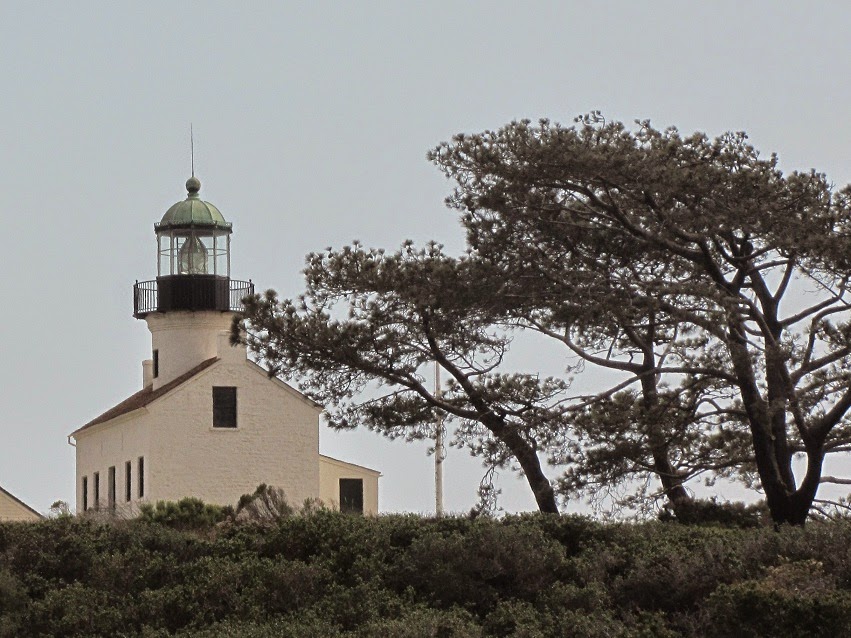Point Loma is reached by driving out a hilly peninsula which wraps around and protects the entrance to the San Diego Harbor. It's a fitting place for Cabrillo National Monument and the statue commemorating Juan Rodriguez Cabrillo who was the first European to set foot on the west coast of what is now the United States. On September 28, 1542, Cabrillo's flotilla entered a harbor that he described as 'a closed and very good port.' This was the site of present day San Diego.
You have to wonder if he could have ever imagined how the area would develop.
(It would look even more built up in this picture, but that's a Naval Air Station between the statue and downtown San Diego.)
The monument is also home to the Point Loma lighthouse, which marked the entrance to the harbor from 1855 to 1891. Sitting at 400 feet above sea level, the light could be seen from as far as 39 miles, but was sometimes obscured by fog.
It was replaced by the current Point Loma lighthouse which is situated near sea level at the tip of the peninsula. It sends out a beam that flashes every 15 seconds and has a foghorn that can be heard by ships up to three miles out.
Also on the peninsula is Fort Rosecrans Military Reservation with a national cemetery. When I was young, I thought Arlington, Virginia, was the only national cemetery. Since then I realized that is far from the case. It's mind boggling how many men and women fought for our freedom and are buried in one of these cemeteries. It's both inspiring and shocking to me.
This is just a small section of the cemetery which encompasses 77.5 acres on both sides of the road with over 100,000 graves.





War cemeteries are such poignant reminders. S D seems are very popular location for R Vers to visit at this time of year.
ReplyDeleteThanks for taking me to some of the sites I haven't been to in SD.
ReplyDeleteI remember going out there when I lived in San Diego back in the mid-70's. Such fun memories.
ReplyDeleteso many graves,,,,there are military cemeteries for our fallen in other countries too they used to bury them where they died instead of transporting them back to the USA.
ReplyDelete